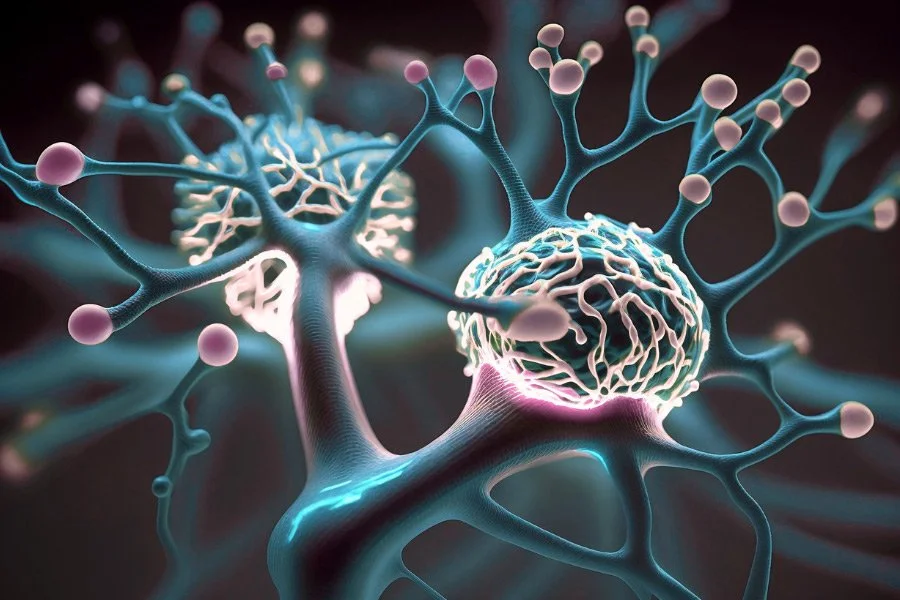Rethinking Parkinson's Disease — A New Era of Individualized Neurological Care
At our integrative medicine practice, we are deeply committed to uncovering the root causes of chronic conditions like Parkinson’s disease and Alzheimer’s, using a whole-body lens that includes neurology, gut health, sleep, and autonomic function. A groundbreaking perspective is now reshaping how we understand and treat neurodegenerative diseases, and it’s one we’re integrating into our patient care model.
Nearly two decades ago, neuroscientist Per Borghammer had an insight that changed his career—and may soon change the way we approach Parkinson’s disease. While reading a study on REM sleep behavior disorder (RBD)—a condition where individuals physically act out their dreams and which often precedes a Parkinson’s diagnosis—he noticed that researchers weren’t just studying the brain. They examined nerve loss in the heart, particularly in neurons that regulate autonomic functions like blood pressure and heart rate. In those patients, heart neurons were almost entirely depleted, even when brain scans appeared normal.
This observation led Borghammer to a pivotal realization: Parkinson’s disease might not always begin in the brain. He proposed a new model in which there are two distinct subtypes:
🔹 Body-first Parkinson’s: The disease begins in peripheral areas, such as the gut or heart, and later spreads to the brain. These patients often experience autonomic dysfunction, constipation, or RBD long before motor symptoms arise.
🔹 Brain-first Parkinson’s: The disease originates directly in brain regions responsible for movement, with motor symptoms like tremors or rigidity appearing earlier in the disease course.
Borghammer’s growing body of work—including 14 published studies—has shown clear differences between these subtypes. Post-mortem exams, imaging studies, and even animal models reveal that alpha-synuclein, the protein that misfolds and forms toxic Lewy bodies, may spread from the gut to the brain via the vagus nerve in body-first Parkinson’s. In brain-first types, alpha-synuclein starts accumulating within the brain itself.
This new framework has profound implications for how we diagnose, monitor, and treat Parkinson’s disease:
✅ More accurate subtyping could allow for more personalized treatment, targeting the gut microbiome in one group and neuroprotective therapies in another.
✅ Earlier detection may be possible through cardiac and gut scans or sleep studies, long before motor symptoms begin.
✅ Clinical trials may become more effective by separating patients into subtypes, increasing the chance of success for targeted therapies.
Our integrative approach embraces these insights by weaving together:
Neurological rehabilitation
Gut-brain axis support
Sleep optimization and circadian alignment
Microbiome rebalancing and targeted detoxification
Emerging studies on gut health further support this paradigm. Misfolded alpha-synuclein has been found in people's gastrointestinal tracts years before they are diagnosed. Some bacteria, like certain strains of E. coli, have been shown to trigger this misfolding process in mice. While microbiome therapies like fecal transplants have shown mixed results in humans, they may prove more useful once patients are subtyped.
This evolution in our understanding of Parkinson’s is a vital reminder of how interconnected the systems of the body are. The brain does not exist in isolation; it is in constant dialogue with the gut, immune, cardiovascular, and microbiome. For patients with Parkinson’s, Alzheimer’s, and other neurodegenerative conditions, this opens a hopeful new door for early intervention and true root-cause healing.
If you are a caregiver, practitioner, or patient seeking a more nuanced approach to neurodegenerative health, we invite you to explore our functional and integrative neurorehabilitation programs. You can learn more about the assessments and rehabilitation we offer for patients concerned with mild cognitive impairment and early Parkinson’s detection.
